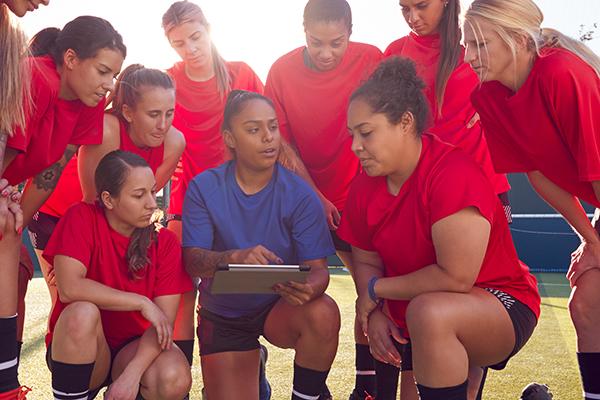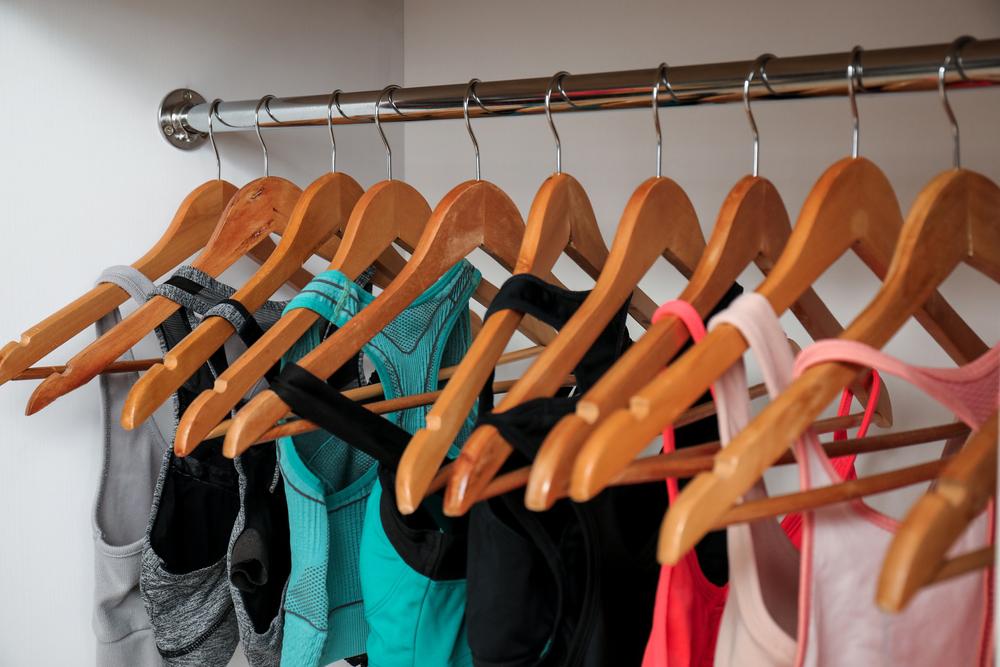 Content Warning: This article contains mentions of eating disorders.
Content Warning: This article contains mentions of eating disorders.
Disordered eating covers a large amount of dieting and exercising behaviors—and while it may not be as severe as a full-blown eating disorder, it can seriously affect a young athlete’s health in the short and long term. Here, TrueSport Expert and licensed clinical psychologist Dr. Melissa Streno explains what disordered eating really is, and how coaches can help their athletes avoid and address disordered eating.
1. Disordered eating isn’t an eating disorder
“Disordered eating is a step before a serious eating disorder, which is where we see a lot more clinical, psychological, and physical consequences happening,” says Streno. “An eating disorder, as it’s defined by the Diagnostic and Statistical Manual, really affects one’s routine, functioning ability, relationships, etc. Disordered behaviors can cumulatively lead to this.”
Streno explains that disordered eating refers to behaviors that deviate from authentically choosing food that sounds good, finding a good variety, eating a moderate amount, and listening to hunger and fullness cues. “Deviating from those behaviors and using a fad diet, any sort of rigid rules, or even using exercise in a disordered way— over exercising with the intention of changing your body weight, shape, and size for example—can be disordered eating,” she says. “Disordered eating also comes down to intention: If a young athlete is doing the keto diet or cutting out carbs because they want to lose weight, that is disordered eating. If they’re under fueling and over exercising to fit into a particular clothing size or to meet a particular body image ideal, that would be disordered.”
Both can be about control, though. “Food and exercise are examples of things that people try to control when everything else feels unpredictable or uncertain,” Streno says.
2. COVID-19 has made disordered eating more common for athletes
 “The stress and change surrounding COVID-19 has contributed to a noticeable uptick in eating disorders and disordered eating behaviors, especially due to the unpredictable and sudden change that occurred in athletes’ familiar routines and structure,” says Streno. “Isolation is a big risk factor, as eating disorders thrive on secrecy and isolation. There’s less accountability from others to hold on to healthy behaviors and choices. There’s less community and less interaction with people, especially within sport.”
“The stress and change surrounding COVID-19 has contributed to a noticeable uptick in eating disorders and disordered eating behaviors, especially due to the unpredictable and sudden change that occurred in athletes’ familiar routines and structure,” says Streno. “Isolation is a big risk factor, as eating disorders thrive on secrecy and isolation. There’s less accountability from others to hold on to healthy behaviors and choices. There’s less community and less interaction with people, especially within sport.”
Additionally, COVID-19 has made getting help harder. “I think also, with everything being virtual, I’ve seen a lot of resistance to going to treatment or joining support groups or seeing a recommended practitioner because they just don’t want to do another Zoom meeting,” Streno adds.
3. Watch your language with the team
“It’s so important for coaches to hold everyone to the same standard. Be careful how you speak about weight, food, exercise, and body image to everyone on the team,” says Streno. “Be aware of what you’re modeling by comments you make to other people. Don’t talk about numbers or weight and steer away from focusing on appearance. Because if you say, ‘Wow, you look really fit,’ to one person on the team, another athlete who’s struggling may hear that as, ‘My coach is looking at my appearance, they’re critiquing, they’re judging.’ Be aware of your language.”
4. Know the warning signs
According to Streno, coaches should be on the lookout for any combination of these warning signs of disordered eating:
- Anxiety, OCD, depression, or mood change
- Loss of energy from those whose normally have good energy
- An increased focus on social media or influencers who conform to a particular body image or ideal image for that sport
- Difficulty focusing or concentrating during practice
- Avoiding any sort of team activity like team meals
- Starting to train outside of the prescribed routine (doing their own runs in the morning or adding extra strength training)
- Obvious physical changes, like big fluctuations in weight or strength
- Noticeable injuries, including stress fractures and overuse injuries
5. Open lines of communication
If you suspect an athlete is struggling, have a conversation with them early…don’t wait for it to become a more serious problem. “Try to frame it as concern, rather than blame,” says Streno. “Let the athlete know that you care, and your concern is coming from caring about the athlete, and their health and safety. Explain what you’ve noticed and ask the athlete to help you understand what you think is going on.” Rather than calling them out, you can say that you’re worried and that you hope you’re wrong. Let the athlete know that you can help them, or that you can help them find professional support.
“If there is real concern—if an athlete is passing out at practice, or if weight has dropped dramatically—you can escalate the situation more, but if you catch it early enough, you can usually begin with a simple conversation,” Streno adds. “But remember, the athlete has to be ready to get help on their own. So instead of shaming them, let them choose the direction they want to go with support. Sometimes they might not know the answer in that moment, but they’ll know that you are there to help.”
6. Set a team standard and protocols early
 Especially in sports where weight plays a role, establish protocols and open lines of communication early. “As a coach, you need to be looking out for the whole person and not be afraid to take an athlete out of play so that they can get help,” Streno says. “There should also be a consistent protocol and standards that must be met before athletes are cleared to play again, similar to concussion protocols.” If needed, bring in experts to assess what’s going on and if an athlete should continue.
Especially in sports where weight plays a role, establish protocols and open lines of communication early. “As a coach, you need to be looking out for the whole person and not be afraid to take an athlete out of play so that they can get help,” Streno says. “There should also be a consistent protocol and standards that must be met before athletes are cleared to play again, similar to concussion protocols.” If needed, bring in experts to assess what’s going on and if an athlete should continue.
7. Make sure athletes are ready to come back
There is no exact timeline for making a comeback from disordered eating. Mountjoy and colleagues’ statement around Relative Energy Deficiency in Sport (RED-S) demonstrates long-term consequences if left untreated, or if an athlete returns to sport too early.
“An athlete should be medically cleared to come back after dealing with disordered eating. There are milestones that should be met, like being able to maintain their meal plan and stay at an appropriate weight,” Streno says. “Then there should be a very gradual reintroduction of activity that parallels appropriate nutrition. And that’s not something a coach should be assessing themselves. There should be a medical and psychological evaluation to see if this person is ready to return to play.”
_________________________
Takeaway
While disordered eating is a serious issue that may require professional support, there are things that coaches can do to prevent and address problematic behaviors, from being mindful of their language to setting healthy protocols.



